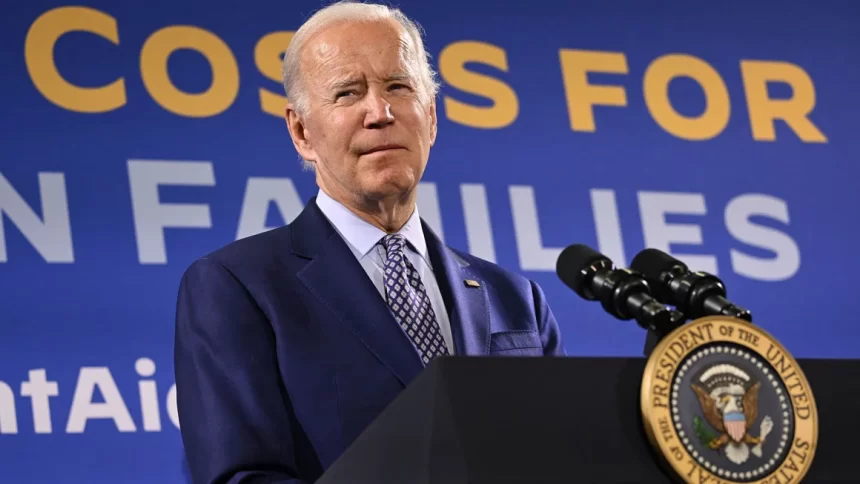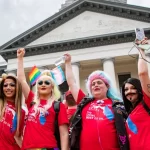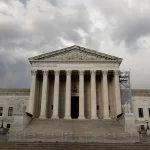Although the Supreme Court struck down President Joe Biden’s signature student loan forgiveness program in late June, his administration has found ways to cancel more than $48 billion in debt since then.
The cancellations have come through existing federal student loan forgiveness programs, which are limited to specific categories of borrowers, such as public-sector workers, people defrauded by for-profit colleges, and borrowers who have paid for at least 20 years.
These programs are separate from the rejected forgiveness plan, which would have canceled about $430 billion of the $1.6 trillion of outstanding federal student loan debt all at one time.
The Biden administration has been granting student loan forgiveness through these existing programs on a rolling basis since coming into office and has discharged a total of $127 billion for nearly 3.6 million people to date.
That’s more student loan forgiveness than was granted under any other administration – in part due to the Biden administration’s efforts to temporarily expand some debt relief programs and to correct past administrative errors made to borrowers’ student loan accounts. The actions draw a stark contrast with the Trump administration, which tried to limit some of these forgiveness programs and slowed the processing of some applications.
But Biden’s Republican critics say that at least some of his debt relief actions are illegal and are an attempt to circumvate the Supreme Court ruling.
Recounting past payments and fixing errors
Nearly $42 billion of federal student loan debt has been canceled for almost 855,000 borrowers enrolled in income-driven repayment plans – largely due to the Biden administration’s effort to recount borrowers’ past payments and fix what officials have called “Past Administrative failures”.
Borrowers enrolled in income-driven repayment plans, which have been available in some form since 1993, are generally eligible for debt discharges after making qualifying payments for at least 20 years. The plans lower monthly payments by tying them to a borrower’s income and family size.
But the Department of Education has historically had trouble tracking borrowers’ payments.
Last year, the US Government Accountability office recommended that the department do more to ensure that borrowers receive the forgiveness they are entitled to, after it found that there were thousands of loans still in repayment that could already be eligible for forgiveness.
“These are borrowers getting discharges that they should have received under programs authorized by Congress if they’d been operated as they should have over decades,” a Department of Education official said to CNN in an emailed statement.
Generally, the one-time recount will give borrowers credit toward forgiveness for any months in which they made payments regardless of what repayment plan they were enrolled in at the time, according to the department of education. The recount especially helps borrowers who may have been inappropriately steered by their student loan servicing company into a long-term forbearance, a period in which they stopped making payments.
A legal challenge moves forward
The one-time account adjustment effort was first announced by the Biden administration in April 2022 – but the cancellations did not begin until this year.
The administration announced it was cancelling $39 billion in student loan debt due to the changes just two weeks after the Supreme Court knocked down Biden’s signature loan forgiveness program – drawing some skepticism about whether the move was legal.
“The Biden administration is trampling the rule of law, hurting borrowers, and abusing taxpayers to chase headlines,” Republican Rep. Virginia Foxx, chair of the House Committee on Education and the Workforce, said in a statement at the time.
“Today’s celebration of counting no payments as payments is just the latest example of the ongoing delusion at the White House,” she added.
The Biden administration is facing at least one lawsuit over the account adjustments, filed by the New Civil Liberties Alliance on behalf of the conservative groups Cato Institute and the Mackinac Center for Public Policy. The plaintiffs recently filed an appeal after the lawsuit was dismissed by a federal judge in Michigan, who ruled that they did not have standing to bring the complaint.
Lawyers for the Biden administration have not yet been required to respond to the complaint and specify the legal authority relied on to cancel billions of dollars of student loan debt by adjusting past payments.
“There are several sources of authority that the department may be relying on, given its expansive authority over the federal student loan program generally and the income-driven repayment plans in particular,” said Abby Shafroth, co-director of advocacy at the National Consumer Law Center and director of its Student Loan Borrower Assistance Project.
Even if the lawsuit succeeds, Shafroth said it would surprise her if the court’s decision would result in reversing the debt relief that has already occurred.
Expanding debt relief program for public-sector workers
Nearly $51 billion of student loan debt has been canceled for 715,000 borrowers through the Public Service Loan Forgiveness program since Biden took office.
The PSLF program cancels outstanding federal student loan debt for public-sector workers who have made 120 qualifying monthly student loan payments, or about 10 years’ worth of payments. A variety of government and nonprofit workers – including teachers, social workers, some nurses and doctors, and government lawyers – may qualify for the program.
The program was created by Congress in 2007 but was plagued with administrative problems before Biden took office.
In 2021, Biden put a temporary waiver in place, expanding eligibility so that some borrowers could retroactively receive credit for past payments that did not otherwise qualify for PSLF.
More than 95% of the borrowers who have been granted debt relief by the PSLF program qualified because of Biden’s temporary waiver.
The temporary benefits ended in October 2022. But the Department of Education has since conducted an executive rulemaking process to permanently change some of the qualifying restrictions of the PSLF program. The changes allow borrowers to receive credit toward PSLF on payments that are made late, in installments or in a lump sum, for example. Those changes went into effect in July.
Processing claims left over from the Trump administration
The Biden administration has canceled $22.5 billion of student loan debt for more than 1.3 million borrowers through an existing program known as borrower defense to repayment, which delivers student debt relief to people who were defrauded by their college.
Most recently, $37 million was canceled for more than 1,200 borrowers who attended the university of Phoenix because the government found that the for-profit school misled students about job prospects.
The borrower defense program was created by Congress decades ago but was rarely used until Corinthian Colleges, a for-profit network of schools, collapsed in 2015.
Under Biden, the Department of Education has made progress in whittling down a backlog of borrower defence claims that built up during the Trump administration.
At one point, more than 200,000 borrower defense claims were pending as former Education Secretary Betsy DeVos made efforts to limit the program. Those efforts were ultimately unsuccessful.
Cutting red tape for disabled borrowers eligible for debt relief
The Biden administration has also made it easier for disabled borrowers to receive the debt relief to which they are entitled. Nearly 513,000 borrowers with a total and permanent disability have received $11.7 billion in student loan forgiveness since 2021.
Previously, borrowers were required to provide documentation from a physician, the Social Security Administration or the Department of Veterans Affairs to show that they qualified for debt relief.
But the Biden administration changed the rule so that the Department of Education can provide automatic discharges for disabled borrowers who are identified through administrative data matching with the Social Security Administration – without the borrowers submitting paperwork.










